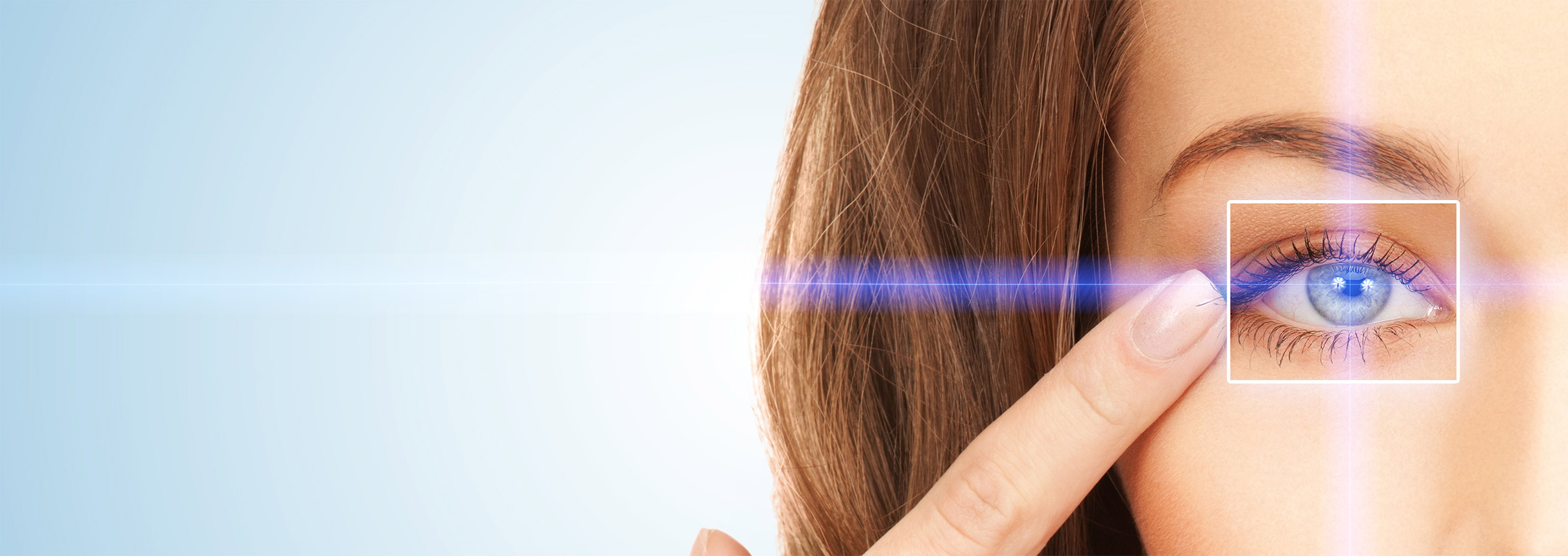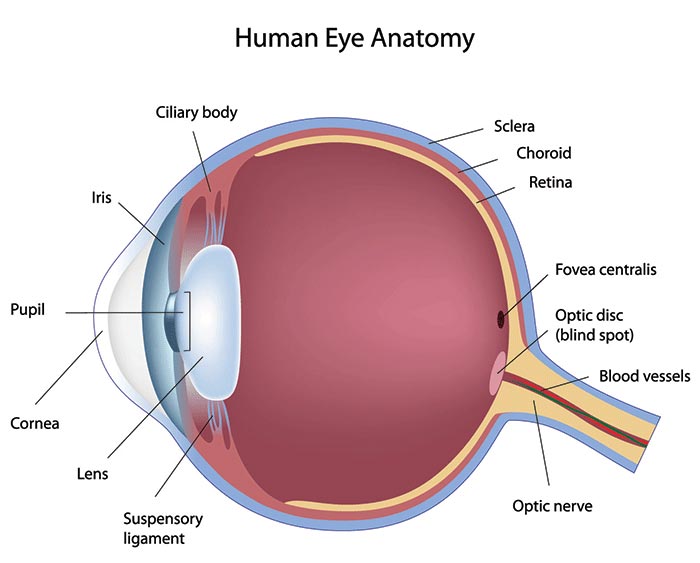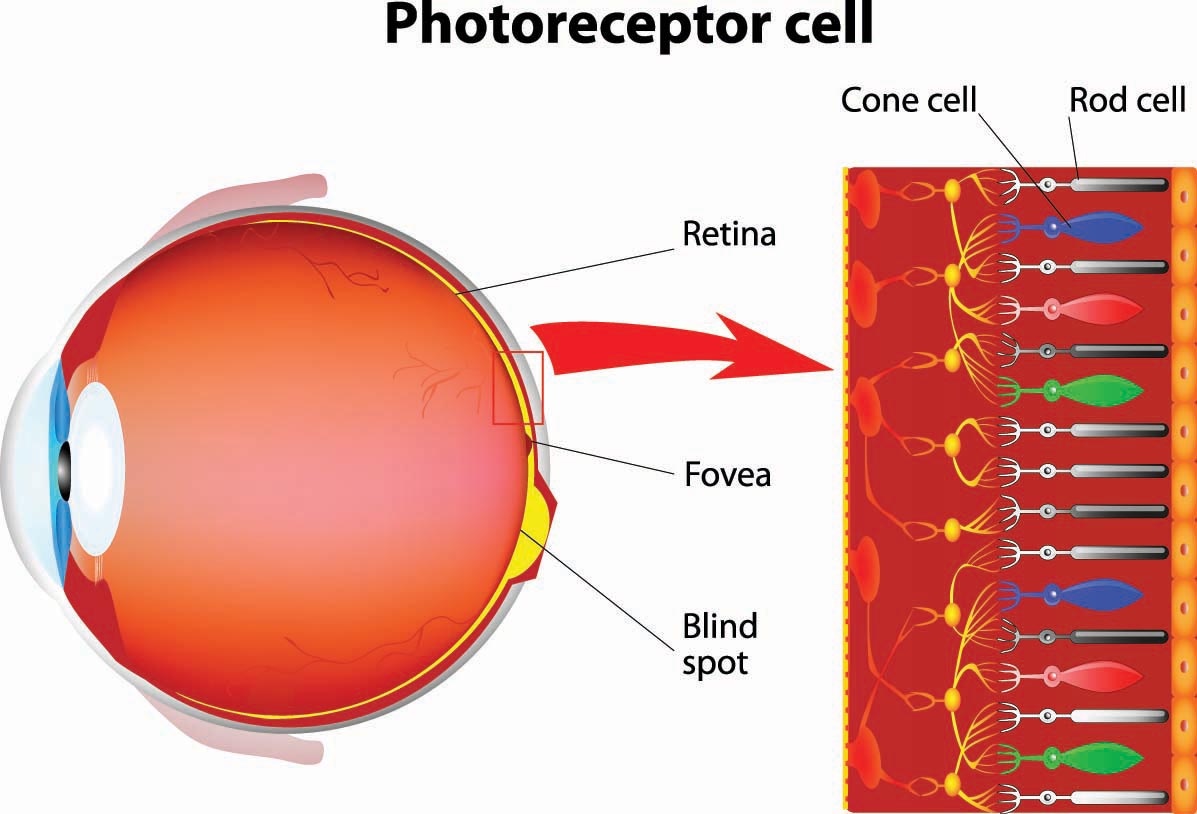The Eye
Light rays enter the eye through the cornea, a transparent structure acting like a window to the eye. The cornea bends light rays so they pass through the pupil, a small opening in the iris, the colored part of the eye. The iris is similar to the shutter in a camera, enlarging and shrinking, regulating the amount of light entering the eye. After passing through the pupil, the light rays hit the eye’s crystalline lens, a transparent and flexible structure similar to a camera’s lens. The human crystalline lens is a biconcave structure that can increase in convexity by the process of accommodation, bringing images of objects of different distances from the eye into focus. The crystalline lens bends light rays so they get properly focused on the retina, a light sensitive tissue lining the back of the eye. On the way, they go through the vitreous, a gel-like substance between the lens and the retina. The vitreous bolsters the spherical shape of the eye. The retina functions much like the film in a camera. It captures light rays and processes them into pulses through millions of nerve fibers, which leave the eye by funneling into a structure called the optic nerve. Signals from the retina are sent through the optic nerve to the brain, where they are interpreted as the images we see.
The Retina
The retina contains millions of light-sensing nerve cells called rods and cones, named as such for their distinct shapes. Cones are located in the macula, an area in the center of the retina. In bright light conditions, cones provide sharp central vision and help detect colors. Rods are found outside the macula and extend all the way to the periphery of the retina. They provide peripheral vision, motion detection, and help us see in dim light and at night. Rods and cones convert the light into electrical impulses, which travel through nerve endings to the optic nerve and then the brain.
[view photos]


